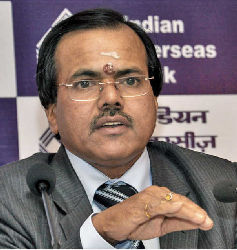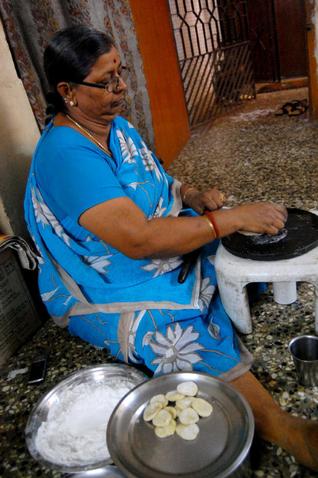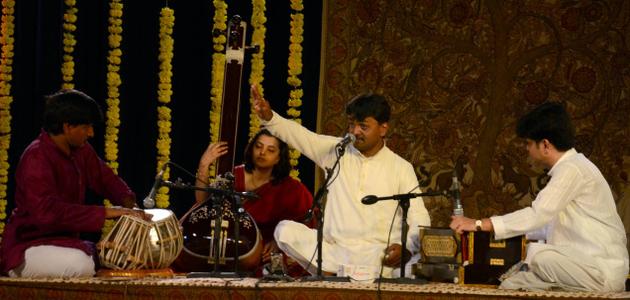SPECIAL FEATURE: CHENNAIT.S. SUBRAMANIAN / Photo: BIJOY GHOSH
| Interview with M. Narendra, CMD, Indian Overseas Bank |
 M. Narendra: “ Our present business has crossed Rs.3,30,000 crore.”
M. Narendra: “ Our present business has crossed Rs.3,30,000 crore.” Indian Overseas Bank (IOB), which celebrated its platinum jubilee in 2011-12, was founded on February 10, 1937, by M.Ct. M. Chidambaram Chettiyar, a pioneer in insurance and industry in the country. On the very day of its foundation, IOB opened three branches – in Chennai and Karaikudi in Tamil Nadu and in Rangoon (now Yangon) in Burma (now Myanmar). Since then, IOB has expanded its operations in keeping with the rapid growth of Chennai, and Tamil Nadu itself. M. Narendra, the 58-year-old Chairman and Managing Director (CMD) of IOB, began his career as an officer-trainee in Corporation Bank. In November 2008, he joined the Bank of India as its executive director. He held that post until he took charge as the CMD of IOB on November 1, 2010.
Excerpts from an e-mail interview Narendra gave Frontline:
What are your plans to take IOB forward in the next five to 10 years?
IOB ranked 10th among the nationalised banks in terms of business when I took over as CMD. Conscious efforts to expand the business helped the bank rise to the seventh position. In the near future, we aim to be among the top five public sector banks. During 2012-13, we plan to increase our branch network and automated teller machine (ATM) network to 3,000 each. Our present business has crossed Rs.3,30,000 crore. We plan to reach the Rs.5,00,000-crore mark by the next financial year.
How do you plan to leverage the goodwill the bank has in the south, especially Tamil Nadu?
IOB has been enjoying the goodwill and patronage of its customers, especially in Tamil Nadu, where the bank was born. Many functions were organised during the year-long celebrations in many parts of the country. BANCON 2011, the annual Bankers’ Conference, was organised in Chennai as part of our platinum jubilee celebrations. All these events have enhanced the bank’s visibility. We have already seen this goodwill bringing in new customers [and]… more business and profits.
You have led a big movement of opening new branches and ATMs for IOB in the past few months. Do you feel the opening of branches will help in business growth? Many private sector banks and foreign banks do not have permanent bank buildings, have agency tie-ups for ATMs, and outsource operations.
Globally, it has been found that a bank’s brick-and-mortar presence symbolises its permanence. In the last decade, we have seen the failure of many Internet banks – banks with only Internet presence. In India, the general public is more comfortable interacting with people than with machines. Our branch expansion has vindicated our stand that new branches bring in more current account and saving account [CASA] deposits. The branches opened after November 2010 have nearly 50 per cent of their deposits in CASA, bringing down the cost of deposits. The expansion of the ATM network will ensure further reduction of transaction costs, bringing in more profits.
Among the 14 banks nationalised on July 19, 1969, IOB was the smallest. Today, it has a business mix of Rs.3,00,000 crore, up from the Rs.1,90,000 crore when you took over as CMD. So IOB’s growth has been tremendous after you took over. Is there anything unique about IOB which you have tapped?
When I joined the bank, I could feel that the growth was not commensurate with the brand image that the bank had gained over the years. In order to inject a new enthusiasm, I gave a call for a 100 days’ mission to reach a business mix of Rs.2,25,000 crore. On December 5, 2010, a mass outreach programme called “Walk-in-Bank” was undertaken, a campaign in which all the employees of the bank participated. I led the movement at Karaikudi, from where our founder hailed and where our first branch was opened. This was followed by a similar mass contact programme, “IOB Smile”, which was organised on January 23, 2011, to reach the unreached and to give a fillip to the financial inclusion programme. These initiatives energised the rank and file, and Mission 100 Days was accomplished successfully. The momentum built up created the buoyancy for creditable growth for the year ended March 31, 2011, and continued for the year ended March 31, 2012.
RBI Governor D. Subbarao recently exhorted banks to “reoccupy the last mile” in lending to small borrowers, which is now occupied by the micro-finance institutions (MFIs). What is IOB’s performance in this area?
IOB has always been a front-runner in extending micro-credit. More than 1,300 business correspondents (BCs) have been engaged by the bank. Training is being imparted to them to carry out their duties effectively. About 738 BCs have been trained until now through 36 programmes.
There is the feeling that banks often focus on big borrowers, lending them money at favourable terms, and do not lend to small and medium enterprises (SMEs) on the same terms.
The public sector banks, in general, have been focussing more on the SME segment than on the big borrowers. I can proudly say that IOB has been number one in terms of financing SMEs. The Government of India recognised it by awarding us the first prize in the National Awards for Excellence in MSE Lending for 2010-11.
IOB’s business mix is much higher than Indian Bank’s, the other household name in Tamil Nadu. Its profits also have always been more than that of Indian Bank. But Indian Bank’s stocks are always quoted higher than IOB’s. What could be the reason for this?
The market value of IOB shares has always been beneath the inherent value. All efforts are being taken to bring benefits to all stakeholders.
Does IOB have any special plans for Chennai and neighbouring districts?
Though we do not have any specific plans for Chennai, we have a well-laid-out branch and ATM expansion plan for 2012-13. During this platinum jubilee year, we have launched many loan products catering to the SME sector and students.
source: http://www.frontline.in / Magazine / Vol 29, Issue 15 – July 28th -August 10th, 2012



